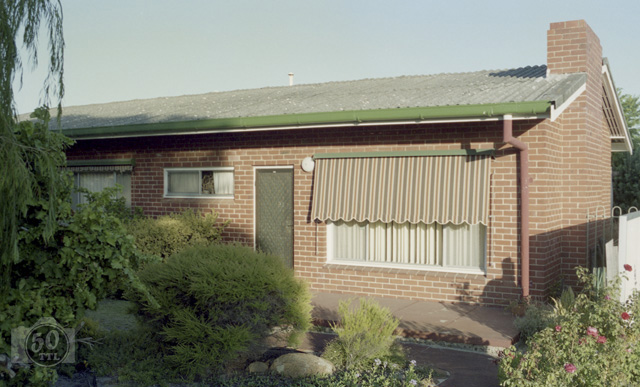
Somewhat appropriately, I took this photo of the family home as my contact with the film era drew to a close. If you have followed my blog from the beginning, you might recognise the house that was the backdrop to the first photo in 50TTL (1968: Frame one), which I count as the first photo I ever took with a camera of my own.
This was the place where I learnt to take photos and where I processed and printed my black-and-white film. The little laundry out the back was my makeshift darkroom.
But the photo above was taken because the house was passing out of the family. My mother’s situation had changed and she moved a few suburbs away. The family home was demolished and replaced with a modern, roomier house. I visited to take some memorabilia photos before the transfer of ownership. Images of that house bookend the film era for me.
A person’s shadow is in the bottom right corner of the brickwork. I am not sure whose it is but I don’t think it is mine, considering the direction of the light. It is probably a family member. Normally, distracting shadows should be avoided. If I ever notice my shadow intruding into the frame of a photo, I do whatever it takes to avoid it: move, zoom, crouch or merge your shadow with the shadow of something else. At the time, I probably did not notice this one. However, now that it is there, I like it. A person’s shadow on the house, the house’s shadow on our family story.
When I look at the photos I took before the house sale was finalised, they seem cold and uninteresting. They comprise a record but they don’t connect to the lives that were lived in the building. The more engaging photos are the ones taken during family events, when the structure is just the background.
Of course, that means that the background is often obscured by a main subject. Photographers are generally encouraged to get in close to the subject and make it fill the frame. However, there is probably also a case for taking a wide shot at most events to capture the context. One day, many years later, that wide shot will be the one that shows the key characteristics of the environment that you lived in or experienced at the time.
If it seems that the momentum has faded in the past few posts, that probably reflects my photographic experience in the early 2000s. The camera was put to use for freelance stories, but not for much else. However, things were about to change because the next move was into the realms of digital photography.